Monkeys are fascinating creatures, captivating us with their intelligence, agility, and social behaviors. However, it’s important to remember that not all monkeys are friendly or safe to interact with. Their danger levels can range from mildly mischievous to outright aggressive, making it crucial to approach these primates with caution, especially in their natural habitats.
1. The Crafty Capuchin: Small But Feisty
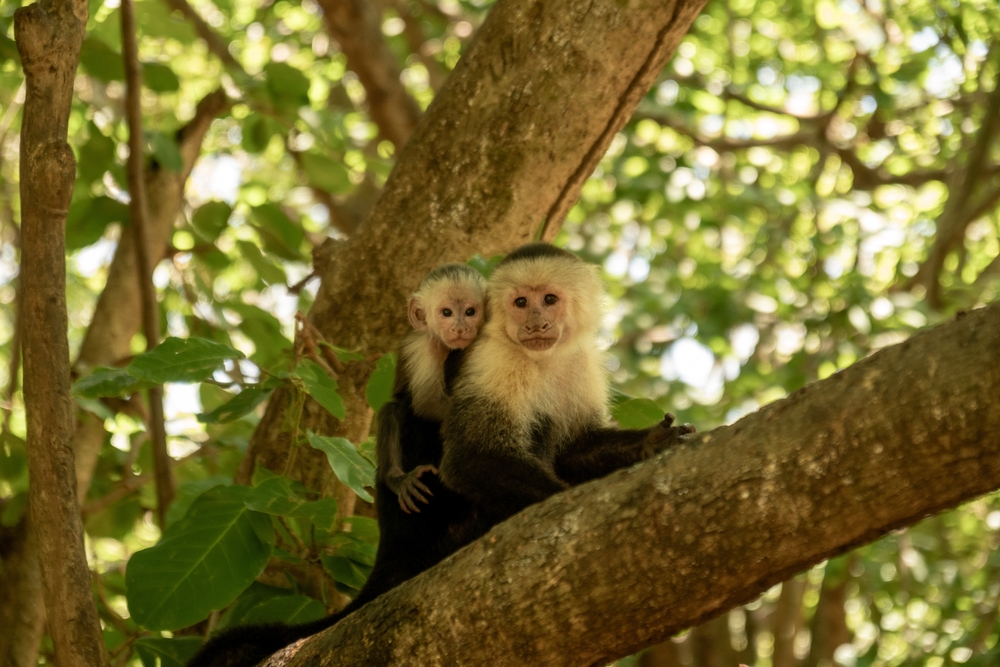
Capuchin monkeys are often portrayed as cute and harmless, appearing as the adorable sidekick to movie stars or unexpected wedding guests. But don’t let their small size fool you; these little primates pack a punch when they feel threatened. Known for their cleverness, Capuchins have sharp teeth and can become aggressive if they perceive a threat to their territory or young ones. They often live in large social groups, and if one Capuchin becomes agitated, the entire troop might rally against the perceived danger. They are notorious for sneaky antics, often attempting to steal food and small items from human visitors.
Their intelligence also means that Capuchins can solve puzzles and outsmart potential threats, making them a formidable force when they become aggressive. They have even been observed using tools to open nuts and seeds, showcasing their problem-solving abilities. Therefore, while they are fascinating to observe from afar, it’s best to maintain a respectful distance to avoid any unexpected encounters with these feisty primates. Whether in the wild or in captivity, these monkeys demand respect and space to thrive peacefully.
2. The Bold Baboon: Mischief With A Mean Streak
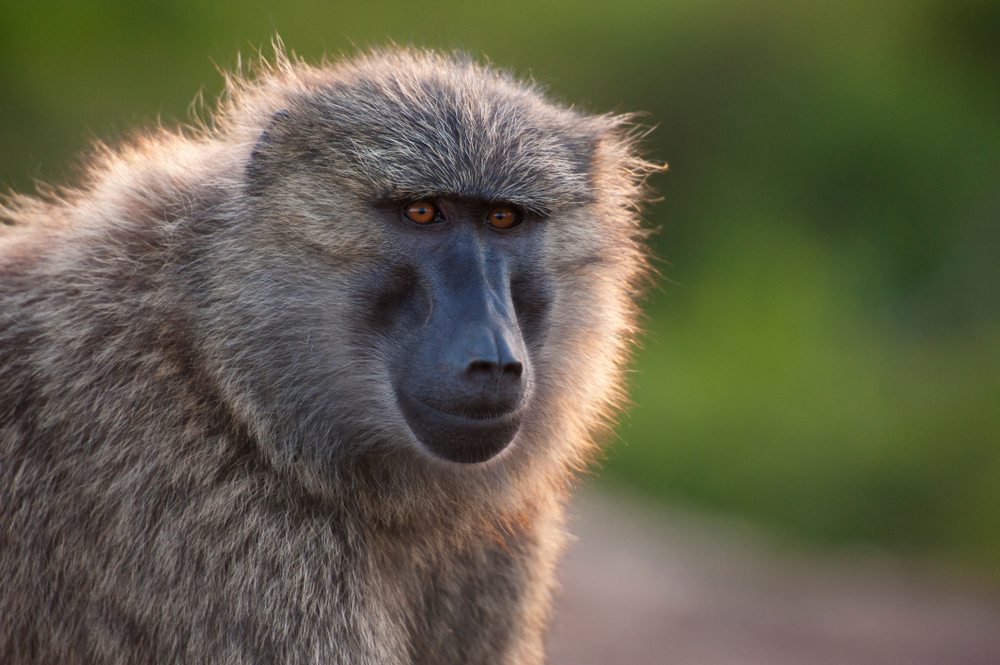
Baboons are larger than many other monkeys and have a commanding presence. Known for their distinctive faces and large canine teeth, these primates can be quite intimidating. Baboons are highly social animals, often traveling in groups that can number in the hundreds, which means they have significant backup when it comes to confrontations. They have been known to raid campsites, vehicles, and even homes for food, showing little fear of humans in some areas.
Despite their casual bravado, baboons can be aggressive if provoked or if they feel threatened. They have strong jaws and sharp teeth, which can inflict serious injuries if they attack. According to National Geographic, baboons have complex social structures and hierarchies, which sometimes lead to intergroup skirmishes. While they are fascinating to watch, particularly for their social interactions, it’s crucial to maintain a safe distance and secure any potential food sources when in their territory.
3. The Raucous Rhesus Macaque: Bold and Boisterous
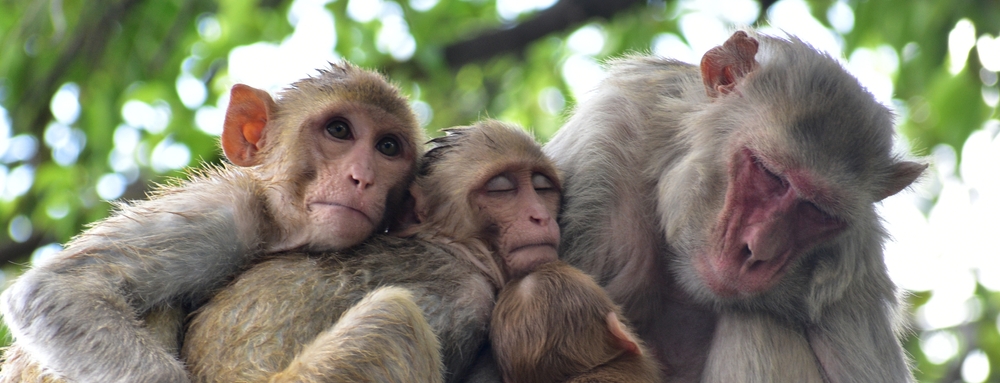
Rhesus macaques are one of the most widespread monkeys, thriving in a variety of environments, from bustling cities to serene forests. With their adaptability comes a boldness that can sometimes lead to human-monkey conflicts, especially in urban areas where they have learned to associate humans with food. These monkeys are not afraid to approach humans and can become quite aggressive if they feel cornered or are attempting to protect their young. They have been known to snatch bags, food, and even shiny objects right out of the hands of unsuspecting people.
Their aggression is not limited to humans; rhesus macaques can also be quite aggressive toward each other, especially during the mating season or when establishing dominance. They have sharp teeth, and their bites can be serious, sometimes requiring medical attention. BBC Earth highlights their adaptability and complex social structures, which contribute to their survival in diverse environments. While they may appear friendly or curious, it’s important to remember that they are wild animals with natural instincts to protect themselves and their resources. Appreciating their intelligence and adaptability from a safe distance ensures both your safety and their well-being.
4. The Intense Howler Monkey: Vocal And Territorial
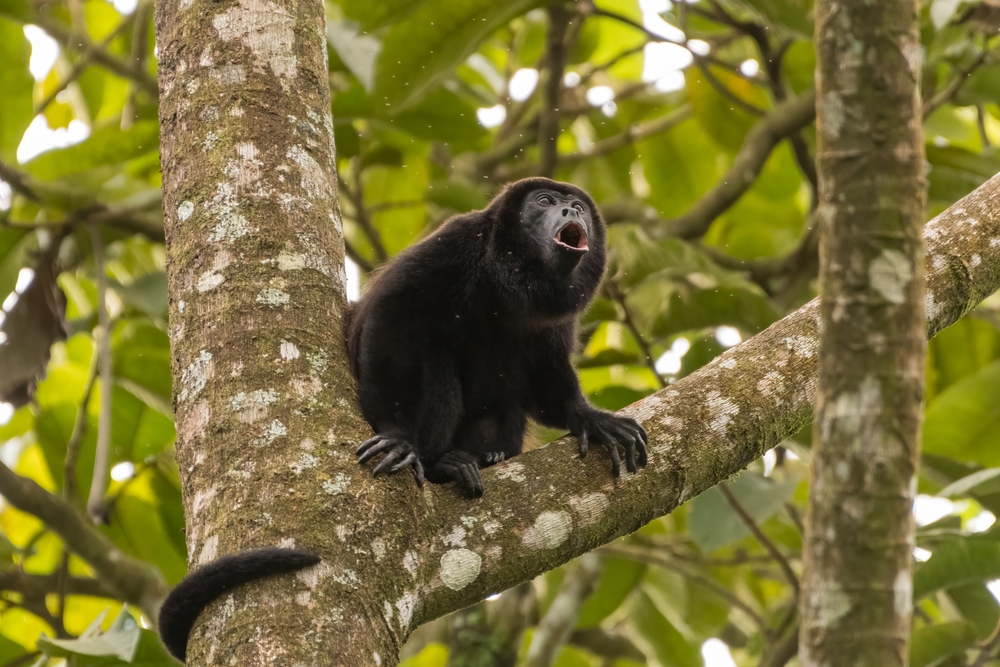
Howler monkeys are known for their loud, resonating calls, which can be heard over two miles away in dense forests. These calls serve as a warning to other monkeys and potential intruders that this territory is claimed and should be respected. While they’re not typically aggressive towards humans, their vocalizations can be intimidating, and the message is clear: keep your distance. Howler monkeys are relatively large for arboreal monkeys, and their strong limbs make them adept at traversing the forest canopy.
Their diet mainly consists of leaves, fruits, and flowers, contributing to their generally calm demeanor when undisturbed. However, if they feel threatened or cornered, they may become aggressive, using their powerful jaws and teeth to defend themselves. In their natural habitat, they play a crucial role in seed dispersal, making them an essential part of their ecosystem. Despite their tendency to avoid human interaction, it’s wise to respect their space and enjoy their vocal performances from afar.
5. The Unpredictable Spider Monkey: Agile And Assertive
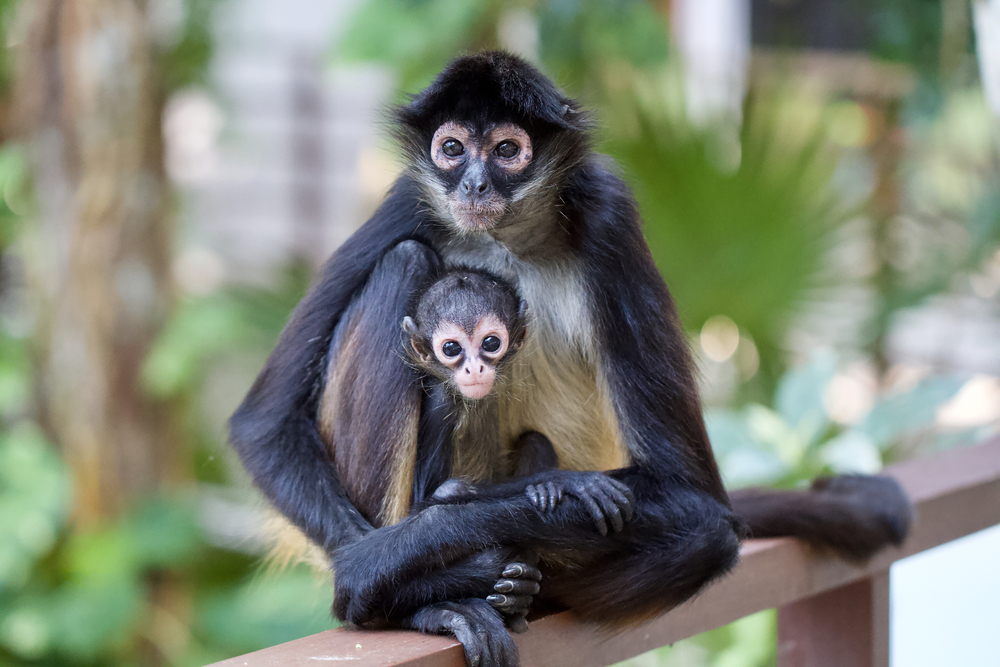
Spider monkeys are acrobatic marvels, swinging effortlessly through the treetops with their long limbs and prehensile tails. They are generally more interested in maintaining their own space than engaging with humans, but this doesn’t mean they can’t be dangerous. If threatened, spider monkeys can be quite assertive, using their agility to launch attacks from above or retreat quickly to safety. Their large groups can become defensive if one member feels threatened, making it perilous to approach too closely.
While primarily frugivores, spider monkeys’ diet occasionally includes leaves and insects, contributing to their high energy levels and constant movement. Observing them in the wild can be an exhilarating experience, as their social interactions and acrobatic feats are captivating. However, it’s essential to remember that they are wild animals capable of defending themselves if they feel their group is in jeopardy. To ensure a safe and respectful encounter, it’s best to admire their antics from a safe distance, allowing them to continue their natural behaviors undisturbed.
6. The Fierce Mandrill: Colorful but Cautious
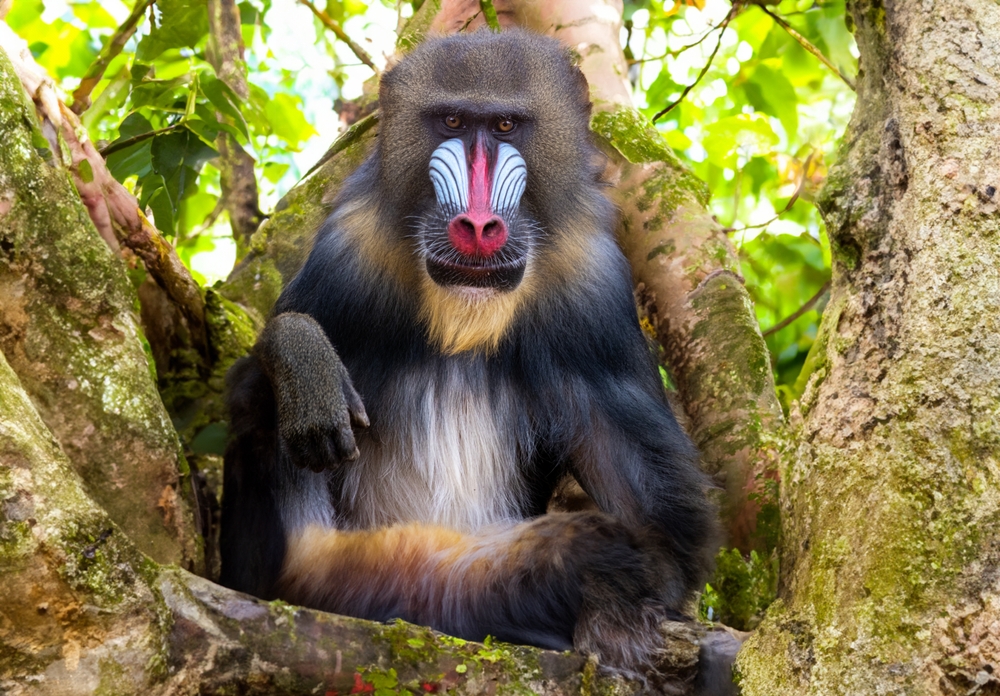
Mandrills are the world’s largest monkeys, known for their vibrant facial coloring and imposing stature. Despite their striking appearance, mandrills are typically shy around humans and prefer the dense forests of Central Africa to the open savannahs. However, their size and formidable teeth can make them appear intimidating, and they will defend themselves vigorously if threatened. In their natural habitat, mandrills are social animals, forming groups called hordes which can include hundreds of individuals.
Their diet is varied, including fruits, leaves, insects, and small animals, contributing to their robust physique. While mandrills generally avoid human interaction, their presence demands respect due to their size and strength. Observing a mandrill in the wild is a rare and thrilling experience, but it’s crucial to maintain a safe distance to avoid any unintended confrontations. By respecting their space, we ensure their continued well-being and the safety of those who venture into their forest domains.
7. The Spirited Squirrel Monkey: Small But Social
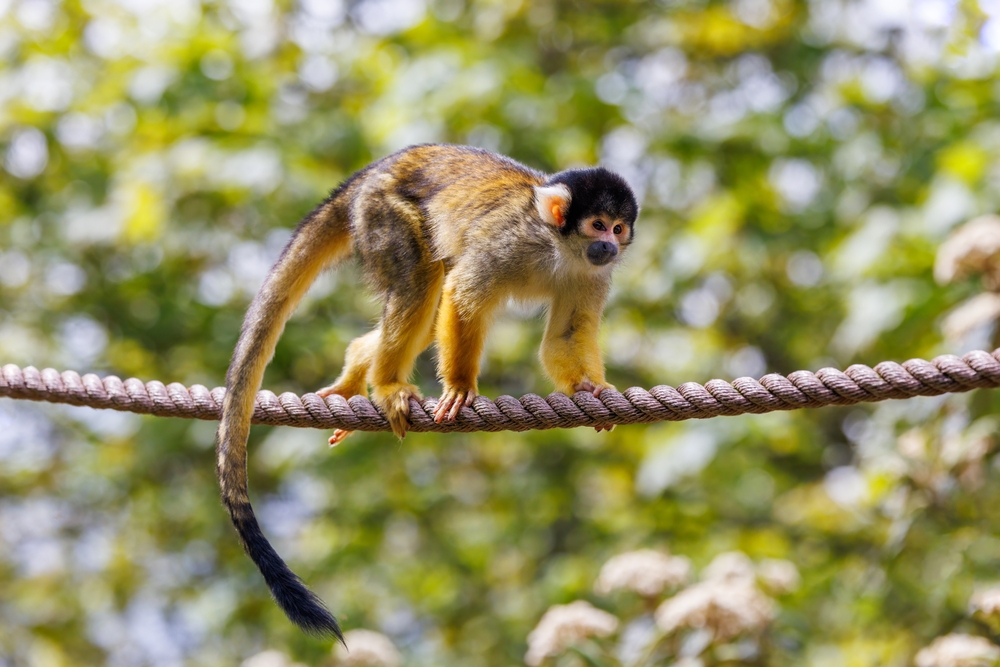
Squirrel monkeys are small, energetic primates often seen in large, lively groups in the treetops of Central and South America. Their curiosity and playfulness make them a delight to watch, but these traits can also lead to boldness when interacting with humans. Despite their small size, squirrel monkeys can be quite assertive, especially if they feel their territory is threatened. In groups, they can overwhelm with numbers, creating a flurry of activity that can be both enchanting and overwhelming.
These monkeys are primarily frugivores, but they also enjoy insects, which they hunt with remarkable agility. Their playful nature extends to interactions with each other, engaging in social grooming and play-fighting. While they are generally not aggressive towards humans, their boldness can sometimes lead to unexpected encounters, especially if they associate humans with food sources. To ensure a harmonious experience, it’s best to observe these charming creatures from a distance, allowing them to engage in their natural behaviors without interference.
8. The Powerful Proboscis Monkey: Remarkable And Reclusive
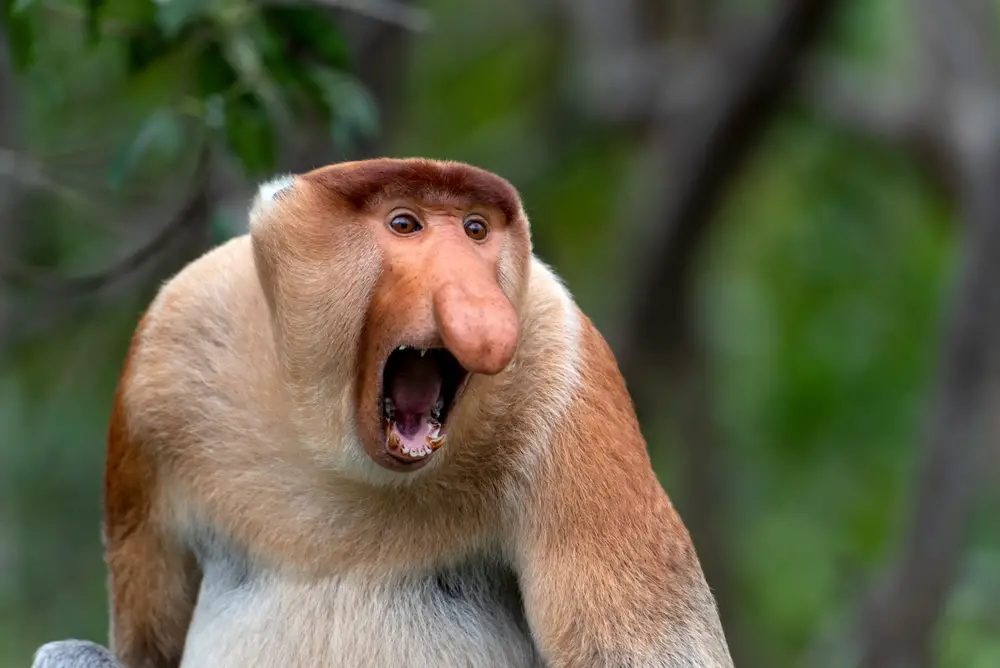
Proboscis monkeys are instantly recognizable due to their large, bulbous noses and potbellies, which add to their endearing appearance. Native to the mangroves and forests of Borneo, these monkeys are excellent swimmers, often seen leaping into rivers to escape predators. Despite their unique appearance and abilities, proboscis monkeys are generally shy and reclusive, preferring to avoid human contact. This does not mean they are defenseless; when threatened, they can be quite formidable, using their strong limbs and sharp teeth to protect themselves.
The diet of proboscis monkeys consists mainly of leaves, seeds, and unripe fruits, which they digest with the help of a specialized stomach. Their social structure is typically composed of small groups, often led by a dominant male who defends his harem from rival males. Observing proboscis monkeys in their natural habitat is a rare treat, as they mainly remain high in the trees or near water sources. To ensure their continued survival, it’s crucial to respect their habitat and maintain a respectful distance during any wildlife encounters.
9. The Elusive Emperor Tamarin: Tiny But Tenacious
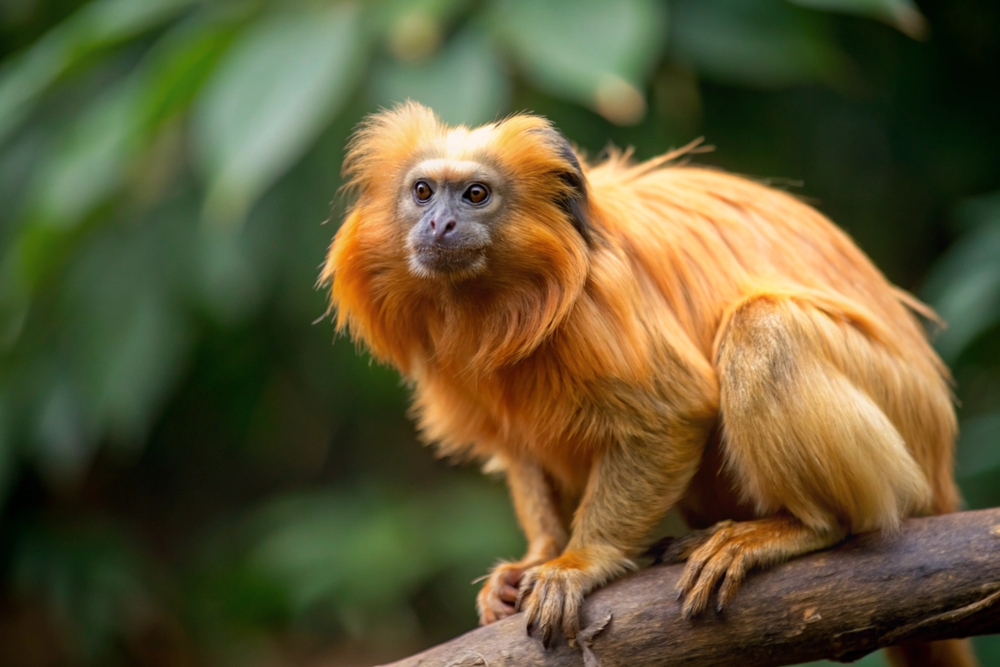
Emperor tamarins are easily recognized by their striking white mustaches, which give them a regal appearance despite their small size. These diminutive primates reside in the lush rainforests of the Amazon Basin, often seen in the company of other tamarin species. Their inquisitive nature makes them a delight to observe, but they can become protective of their territory or young ones if they sense danger. Although not typically aggressive towards humans, these monkeys are known for their agility and quickness, which can be surprising given their size.
Their diet is varied, consisting of fruits, insects, nectar, and even small vertebrates, providing them with the necessary energy to navigate their complex environment. Emperor tamarins are social creatures, often living in groups that provide safety in numbers and enhance their playful interactions. Watching their antics can be a joyous experience, but it’s important to remember that they are wild animals with natural instincts to protect their own. Keeping a respectful distance ensures a safe and enjoyable experience for both observer and primate.
10. The Guarded Gelada: Distinctive and Defensive
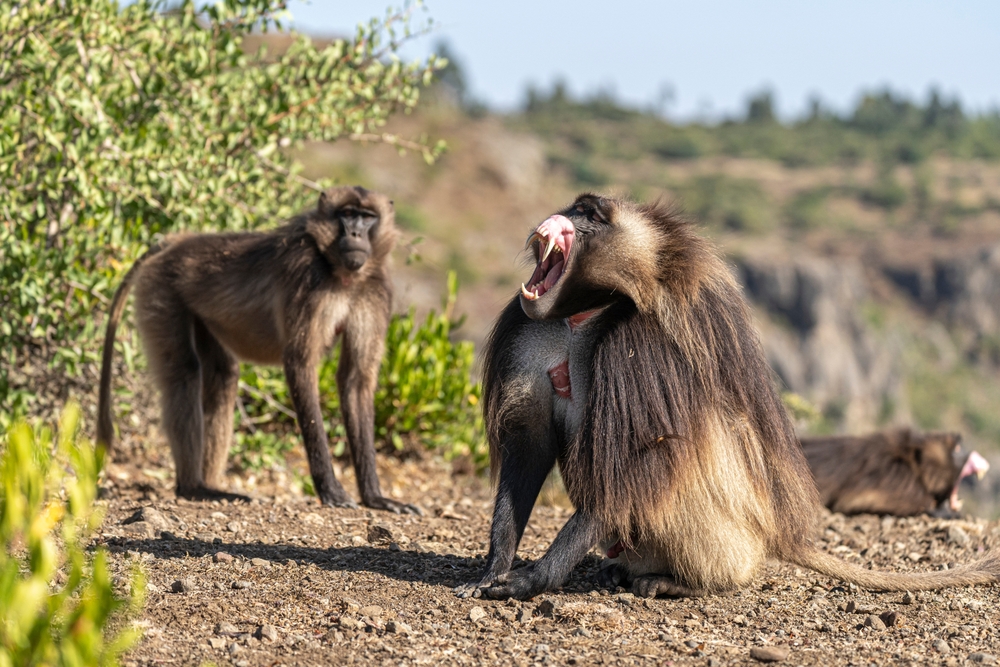
Geladas, native to the Ethiopian highlands, are known for their striking appearance with a heart-shaped patch of skin on their chests and flowing manes. These ground-dwelling primates are unique among monkeys, primarily feeding on grasses and spending much of their time foraging on the ground. While they are generally non-aggressive, geladas can become defensive, particularly during mating season or when protecting their group from potential threats. Males display their dominance through vocalizations and body postures, showcasing their impressive canines as a warning.
Their social structure is complex, with large groups comprised of smaller family units that provide protection and social interaction. Observing geladas in their natural habitat offers insight into their intricate social dynamics and foraging behaviors. While they typically avoid direct confrontation with humans, it’s crucial to respect their space, especially during sensitive times such as breeding or when young are present. Enjoying the sight of these majestic creatures from a safe distance ensures the safety and well-being of both species involved.
